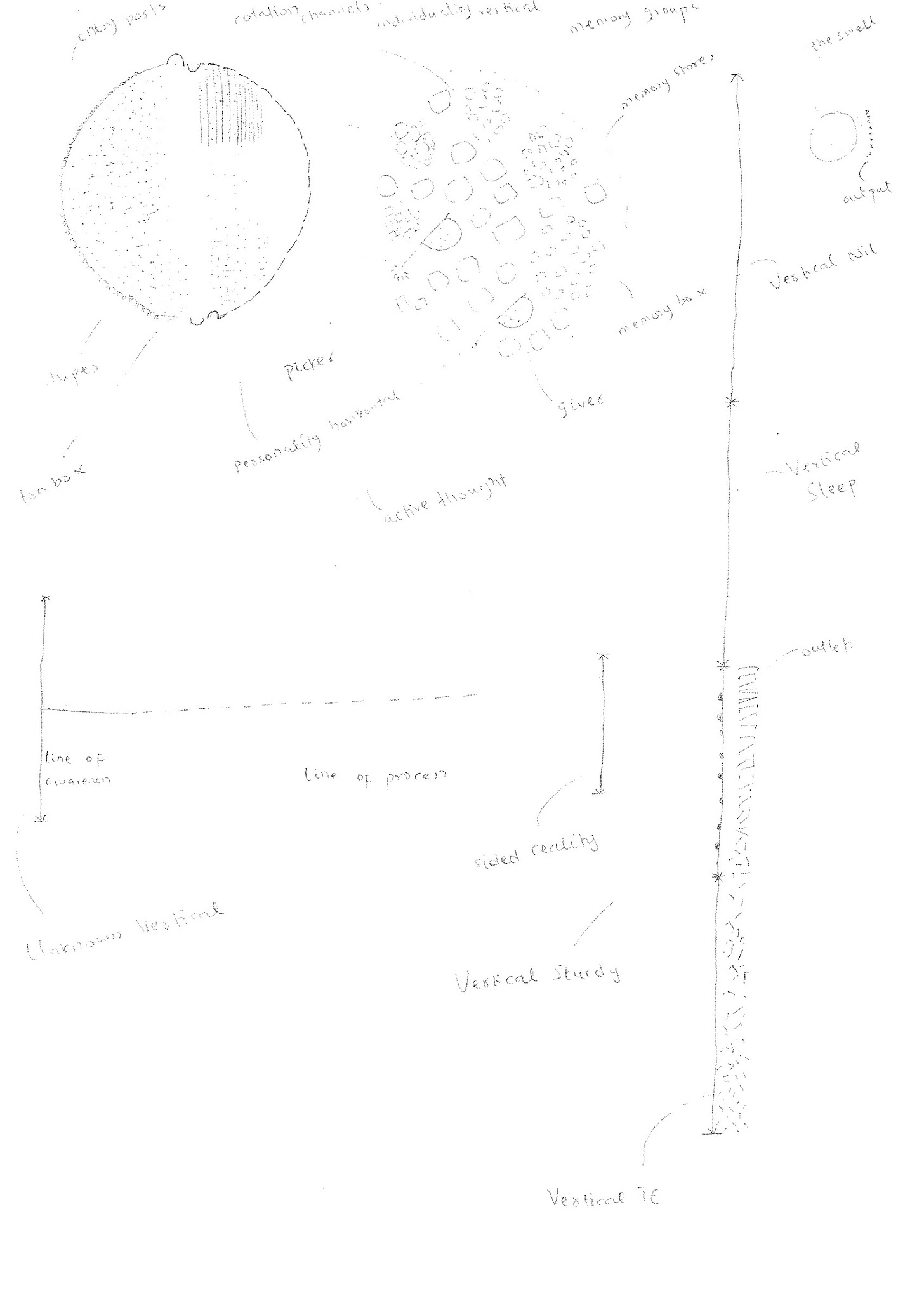What is the Thought Aspect of Everything the Brain Does?
Theoretical Model of Thoughts: Neuroscience and Psychology
The hypothalamus recognizes the secretion of leptin and ghrelin. Leptin determines satiation, ghrelin determines appetite. So it seems like there is no role for thoughts in this. But does the memory know the hypothalamus exists? Does the memory know that leptin and ghrelin are secreted and does the memory play any role in hunger and satiation?
If the memory – wherever it is or stored – does not know that the hypothalamus exists and does not know about those secretions, then there will be no feeling aspect of appetite or satiation.
Also, to be hungry is ghrelin, but to know that this is hunger is the memory. Is there any chance that to be hungry is known without the memory? It is common for infants to cry when hungry, that reaction is not just by some hormone, but a negative feeling off the release of that hormone and a reaction - crying - like this is bad.
Growing up, it is inferred or known that – what it means to feel this way when you have not eaten is called hunger. And to go on, knowing what hunger is, and the sometimes bad feeling of it, seems different from hormonal action.
For adults, it is possible to be hungry, and ignore – either by being really busy that the bad feeling of hunger is secondary to the activity of the time, or to have a worse feeling of something else and hunger-bad-feeling is jettisoned.
So while hormones are secreted and can get more secreted, they can be prioritized or demoted by feelings.
Having an excellent meal, with great aroma and taste is not necessarily about hormones, it is about feeling. This is different from seeing good food on a screen with no access, or passing by an aroma and having no access. This is also different from the best food is waiting, and the feeling of knowing causes happiness and smiles.
So there is taste and know or say there is smell, know and feel good or bad, or nothing, and react something or nothing.
Now, where do feelings and emotions come from – at least theoretically? How is it possible to feel something about anything, and then react to that feeling or emotion or mood, by action or reaction or adjustments?
The car that fell apart on the highway somewhere gives a terrible feeling. But how does the brain even know what a car is, or how does the brain know one's ownership, or that falling apart of that car is a bad thing?
There is physical reality - a car, a house, a smartphone, a table, a chair, a book, a computer, food, drink and so on. There is thought reality of those. But the physical reality of anything has to be converted first to thought, for the brain to process it, since one can't fit a car to the brain or anything like that.
This thought reality, then goes to the memory, and it is stored there, with registration, normalcy, and grouping. Whenever a chair is seen, it goes from the entry port to the memory stores, where normalcy is checked and the thought goes to a place of feeling where nothing is felt, or it becomes passive.
But if the chair is out of place, or broken or decolorized, thought-reality normalcy check is amiss, then feelings go to a bad place – or to anger, or frustration, which may lead to reaction like screaming or throwing things.
If there was something worse on the mind than just a chair, then the feeling is discarded, but if the chair miss would spook colleagues, there may be serious fears, with several kinds of guesses.
These guesses, though may have never happened to the chair, come from the memory group loan system: could it have been taken, could this be an embarrassment plot, was the chair low quality, and so on. There are several memory stores, but different groups. These groups are collected based on similarities, to ease what can be assumed about anything rather than go through a new process, by the throwers and picker-giver.
Theoretically, everything is converted to thoughts at an entry point, this converted thoughts are taken by throwers through the individuality area, or personality area to the pickers of the memory box, or directly to the stores. It is from the stores that thoughts are given to a line of process facing a vertical scale. It is on this vertical scale that feelings, emotions, happiness, anger and fear are decided. This vertical scale has an outlet area next to it, that may become laughter, frowning, smiling, crying, jumping and so on.
Sweating is an output, but it is also an input. There is sweating and to know this is sweating, which is sweat converted to a thought first, then to the memory store of sweat. Then there is the feeling of sweat, which for some situations may feel good, and some others may feel bad.
This theory is thought throughput collectivity summarization across totality of input and output away from the regular blanket of sensory input.
This theoretical model shows there is the knowing and feeling part of situations. So while there are several chemical and electrical activities, most of them become input that get converted to thoughts so the memory knows what everything is.
Looking within this theory, it is possible to theorize that many parts of the brain may have dual functionality, where they convert whatever they get to thoughts and send it to their memory aspect. But this is not the focus of this theory, the goal is to see the rules that thoughts follow, and be able to newly understand various mind and behavioral struggles.

